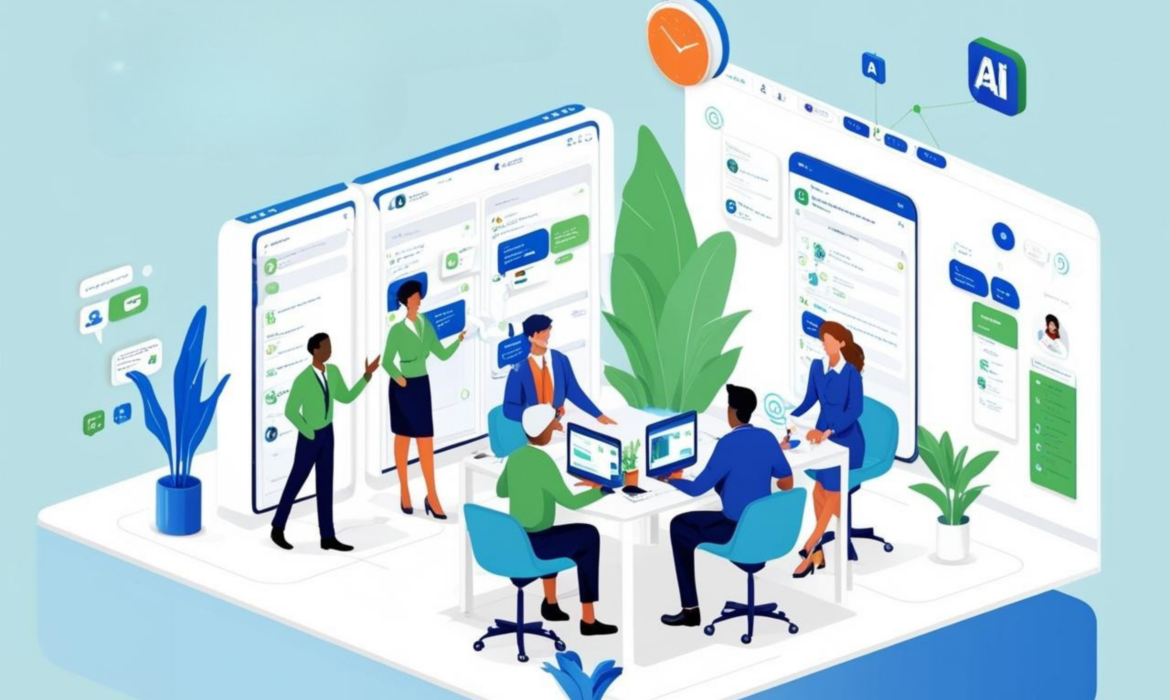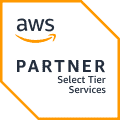Transforming Talent Acquisition with Gen AI: A Competitive Advantage for Modern Organizations
In today’s competitive job market, winning top talent means recruiting faster, smarter, and at scale. Traditional systems fall short in delivering personalized, data-driven hiring. Generative AI is revolutionizing talent acquisition by using advanced AI models, especially large language models, to generate, understand, and optimize recruitment processes.
Unlocking Efficiency: How AI Can Eliminate Workflow Bottlenecks in Supply Chain
From unexpected delays to inaccurate forecasts, bottlenecks in supply chain workflows often arise not from major breakdowns, but from small, unnoticed inefficiencies compounded over time. The result? Slower delivery cycles, rising costs, and missed opportunities.
Mastering AI in Supply Chains: A Guide to Successful Implementation
Artificial Intelligence has become a vital component of supply chain management, driving transformation. From predictive analytics to automated inventory optimization, AI is revolutionizing the way businesses forecast, plan, and deliver. But successful AI implementation isn’t a one-size-fits-all solution; it requires careful preparation and a strong operational focus.
Mastering Supply Chain Efficiency: The Strategic Edge of AI
Supply chain management has always been a complex operation, balancing multiple moving parts across procurement, manufacturing, logistics, and delivery. Traditionally, businesses have struggled with challenges like limited visibility across the supply chain, inaccurate demand forecasting, delayed responses to disruptions, rising operational costs, and inefficient manual processes.
Harnessing AI: A Strategic Advantage For Today’s Business Leaders
In today’s fast-paced digital economy, artificial intelligence is no longer a futuristic concept – it’s a present-day differentiator. Forward-thinking leaders are increasingly viewing AI not just as a tool, but as a strategic imperative that drives efficiency & innovation.
AI-Powered Workflow Automation For Healthcare Efficiency
In an era where healthcare organizations are expected to deliver faster, more personalized care with tighter budgets & fewer resources, operational efficiency is no longer a luxury; it’s a necessity.
Automating Customer Service: The Role of AI in Modern Contact Center
Imagine a world where customer service inquiries are resolved instantly and available 24/7, eliminating the frustration of waiting on hold. As customer expectations grow in today’s fast-paced digital landscape, organizations are increasingly looking for innovative solutions to enhance efficiency and satisfaction. Automating customer service has emerged as a key strategy in this evolution, with artificial intelligence (AI) at the forefront of modern contact centers.
AI technologies, including chatbots, natural language processing, and predictive analytics, empower businesses to streamline their operations, reduce response times, and deliver personalized experiences. By adopting these AI-driven solutions, companies are transforming the way they interact with customers and setting new standards for service excellence. This shift not only drives greater customer loyalty but also enhances overall operational effectiveness, ensuring that businesses remain competitive in an ever-changing market.
The Evolution of Contact Centers: From Manual to AI-Driven Operations
The transformation of contact centers has shifted from traditional manual processes to sophisticated AI-driven systems. In the past, human agents handled customer inquiries over the phone, often resulting in long wait times and inconsistent service due to high call volumes. While automatic call distribution and interactive voice response (IVR) technologies improved efficiency, they still relied heavily on human involvement, demonstrating the need for greater automation in customer service.
Currently, AI technologies have revolutionized contact centers by significantly enhancing customer experience and operational efficiency. By utilizing natural language processing, predictive analytics, and machine learning, contact centers can automate routine inquiries and provide personalized assistance around the clock through AI chatbots and virtual assistants. This shift allows human agents to focus on more complex issues, streamlining processes and improving response times, ultimately leading to higher customer satisfaction. As AI continues to evolve, contact centers are set to further enhance their capabilities, helping organizations succeed in a competitive environment.
Key AI Technologies Powering Modern Contact Centers
Modern contact centers are transforming customer service with AI-driven technologies. Natural Language Processing (NLP) empowers chatbots and virtual assistants to understand and engage in human-like conversations. These intelligent tools efficiently handle inquiries, provide instant information, and complete transactions without human intervention. By reducing wait times and automating routine tasks, AI enhances speed and accuracy in customer support. Voice and text interactions feel seamless, ensuring a smooth and engaging experience. As a result, businesses can deliver faster, more responsive service while optimizing resources.
Predictive analytics takes customer interactions to the next level by forecasting needs before they arise. By analyzing past data, AI helps agents proactively address issues like billing concerns or service disruptions. This foresight enables personalized interactions that improve customer satisfaction and loyalty. Real-time speech recognition and sentiment analysis further enhance quality assurance and agent performance. These AI capabilities refine training, ensuring teams are better equipped to handle complex requests. As AI evolves, it continues to revolutionize contact centers, making them more agile, intelligent, and customer-focused.
The Advantages of AI in Contact Centers: Cost Savings and Scalability
AI adoption in contact centers boosts cost efficiency and scalability by automating tasks like customer inquiries, transactions, and scheduling. This reduces workforce needs, cutting operational costs while optimizing workflow through intelligent call routing.
AI also enables seamless scaling to match fluctuating demand. During peak periods, AI chatbots efficiently manage surges, ensuring fast response times and consistent service quality. This adaptability enhances customer satisfaction and loyalty while helping businesses stay competitive, improve productivity, and respond swiftly to market changes.
Boosting Agent Productivity and Reducing Workload with AI
AI is revolutionizing workplace productivity by automating routine tasks like data entry, customer inquiries, and report generation. This allows agents to focus on complex issues requiring critical thinking and creativity, improving efficiency and service quality. AI chatbots handle basic queries, freeing up agents for more meaningful work that adds value to their organizations.
Additionally, AI-driven analytics provide real-time insights, helping agents make informed decisions and personalize customer interactions. By streamlining workloads and enhancing outcomes, AI empowers employees to maximize their skills while reducing repetitive tasks. As AI advances, it continues to create a more efficient, dynamic, and responsive workplace.
The Future of AI in Contact Centers: Trends and Innovations
AI is poised to transform contact centers by introducing chatbots and voice assistants that facilitate immediate automated responses. This enhances user experiences while allowing human agents to concentrate on complex issues, providing a more seamless service.
Moreover, AI advancements will improve operational efficiency in contact centers, optimizing processes and promoting better resource management and cost savings. Continuous innovations in AI technology will keep contact centers adaptable to customer needs, enabling businesses to enhance service capabilities and maintain a competitive edge in a fast-paced market.
Securing Tomorrow: The Key Role of Cybersecurity in Telecommunications
Understanding the Cyber Threat Landscape in Telecom
The telecommunications industry is increasingly becoming a prime target for cyber threats due to its critical role in global connectivity. As telecom networks evolve with new technologies, such as 5G and the Internet of Things (IoT), they face heightened vulnerabilities. Cybercriminals exploit these weaknesses to launch attacks, disrupt services, and compromise sensitive data, making it essential for telecom companies to understand the cyber threat landscape.
To safeguard against these risks, telecom providers must adopt robust cybersecurity measures and stay updated on emerging threats. This includes investing in advanced security solutions, conducting regular threat assessments, and fostering a culture of cybersecurity awareness among employees. By prioritizing cybersecurity, telecom companies can protect their networks and maintain customer trust, ensuring secure and reliable communication services.
Key Cybersecurity Challenges for Telecommunications Providers
- Increasing Sophistication of Cyber Attacks: Telecommunications providers face increasingly sophisticated cyber threats, such as advanced persistent threats (APTs) and ransomware, that exploit vulnerabilities in their infrastructures. Given their crucial role in global communication, these networks are prime targets for cybercriminals. Providers must invest in advanced threat detection and establish robust incident response plans to quickly identify and mitigate attacks.
- Complexity of Telecommunications Networks: The complex nature of telecommunications networks, including legacy systems and modern platforms, creates security challenges. The rapid growth of Internet of Things (IoT) devices further complicates security, as many lack adequate protections. Providers need a unified cybersecurity strategy that includes regular vulnerability assessments and network segmentation to effectively manage risks across all components.
- Regulatory Compliance: Telecommunications companies must navigate a complex regulatory environment, adhering to strict regulations such as GDPR and CCPA. Non-compliance can lead to hefty fines and reputational harm. As regulations evolve in response to new threats, telecom providers must invest in compliance-focused cybersecurity frameworks and ongoing employee training to ensure alignment with current standards.
- Insider Threats and Human Error: Insider threats and human error pose significant security risks to telecommunications networks. Employees can unintentionally expose systems to breaches or engage in malicious activities. Providers should prioritize employee training on cybersecurity best practices to mitigate these risks and implement strict access controls and monitoring systems to protect critical assets.
Innovative Cybersecurity Solutions for the Telecommunications Industry
Amid rising cyber threats, the telecommunications industry is adopting innovative solutions to bolster cybersecurity and protect sensitive information. A key advancement is the integration of artificial intelligence (AI) and machine learning (ML) into cybersecurity protocols. These technologies allow telecom companies to analyze extensive network data in real time, identifying potential threats and anomalies that might otherwise go undetected. By utilizing predictive analytics, AI systems can proactively spot vulnerabilities and trigger automated responses, effectively mitigating risks before they escalate into serious incidents. This proactive approach is vital as cyber threats become more sophisticated.
Additionally, the shift to a zero-trust security model is revolutionizing how telecom companies secure their networks. Unlike traditional frameworks that often assume internal traffic is safe, the zero-trust model operates on the principle of “never trust, always verify.” This approach requires strict authentication for every user and device accessing network resources, regardless of their location. Continuous monitoring and multifactor authentication help telecom providers significantly reduce the risk of data breaches. By implementing this model, companies enhance their security resilience, ensuring they can better withstand complex cyber threats while maintaining customer trust.
Moreover, collaboration within the industry is crucial for strengthening cybersecurity. Telecom companies are forming partnerships with cybersecurity firms to share intelligence and best practices, leading to a deeper understanding of the threat landscape. These collaborations aid in developing tailored solutions addressing specific sector vulnerabilities. By embracing innovative technologies and fostering a culture of collaboration, telecom providers can stay ahead of cyber adversaries, effectively protecting their infrastructure and customer data in a rapidly evolving digital environment.
Collaboration and Information Sharing in Telecom
Collaboration and information sharing in the telecom sector are essential to address the rapidly evolving challenges posed by cyber threats, technological advancements, and regulatory requirements. By pooling resources and insights, telecom companies can strengthen their defenses against cyberattacks, ensuring more resilient networks and secure communications. This collective approach helps in identifying vulnerabilities and developing best practices to counter threats effectively, benefiting the entire ecosystem. Initiatives like sharing threat intelligence and collaborating on industry standards allow companies to stay ahead of attackers and comply with regulations more efficiently.
Furthermore, partnerships between telecom operators, technology providers, and regulatory bodies foster innovation while maintaining security and operational efficiency. For example, collaboration on advancements in 5G and AI integration ensures that new technologies are deployed securely and sustainably. Open dialogue between stakeholders, including public and private entities, enables a more unified approach to solving industry-wide challenges such as data privacy, network optimization, and global connectivity. By embracing a culture of collaboration and transparency, the telecom sector can achieve robust growth while safeguarding its critical infrastructure.
Future-Proofing Telecom Cybersecurity Strategies
To future-proof cybersecurity strategies, telecommunications providers must address the expanding threats associated with 5G technology and the widespread use of Internet of Things (IoT) devices. These developments have broadened the attack surface, making telecom networks more appealing to cybercriminals. To combat these challenges, companies should implement adaptable security measures, leveraging advanced technologies like artificial intelligence (AI) and machine learning (ML) for enhanced threat detection and real-time network data analysis. This proactive approach facilitates early identification of anomalies before they escalate into serious breaches.
Moreover, cultivating a culture of cybersecurity awareness and compliance is essential. Continuous training for all employees helps minimize human error, a frequent contributor to security incidents. Telecom providers must also stay agile in response to regulatory changes by adopting flexible compliance frameworks. Collaborating with industry partners and cybersecurity experts can further bolster resilience through shared insights and best practices. By fostering a security-focused mindset and maintaining adaptability in their strategies, telecommunications companies can strengthen network protection and preserve customer trust in an increasingly interconnected world.
Everything you need to know about Private 5G Networks
 The 5th Generation mobile network, popularly known as 5G, is the new global wireless standard that succeeds the 4G technology. The 5G technology offers high-speed network connectivity with low latency and accommodates a wide range of devices in the network. Today, businesses are aggressively embracing the 5G revolution. However, the majority of businesses are challenged to apply the 5G benefits to operations owing to the exponential growth of digital innovation that is augmented with data-heavy emerging technologies in the form of AI/ML platforms, AR/VR solutions and real-time analytics. The Covid-19 pandemic was a key driver of this digital innovation. This is where private 5G networks make a strong case.
The 5th Generation mobile network, popularly known as 5G, is the new global wireless standard that succeeds the 4G technology. The 5G technology offers high-speed network connectivity with low latency and accommodates a wide range of devices in the network. Today, businesses are aggressively embracing the 5G revolution. However, the majority of businesses are challenged to apply the 5G benefits to operations owing to the exponential growth of digital innovation that is augmented with data-heavy emerging technologies in the form of AI/ML platforms, AR/VR solutions and real-time analytics. The Covid-19 pandemic was a key driver of this digital innovation. This is where private 5G networks make a strong case.
An Overview of Private 5G Network
A private 5G network enables organizations to customize 5G technology to suit business-specific requirements, security and priority access to its wireless spectrum. It replaces the 4G LTE network technology. However, businesses can still use private 5G along with 4G LTE networks as both networks use different frequency bands.
Private 5G networks can be classified into two categories:
Full Private 5G Network: When the network spectrum and network base stations are owned by the organization, that network is called a full private 5G network.
Hybrid Private 5G Network: In this model, the organization share the network infrastructure wherein the network is sliced with different control plane and user plane functionalities.
While both public and private 5G networks replace 4G LTE networks and are similar in most ways, isolation and priority access are two important aspects that differentiate them. Using private 5G networks, operators can partially or fully isolate certain user devices from the mobile network operator’s public networks as a security policy to reduce exposure to public interfaces when sensitive data is involved. When security is not a concern, devices can seamlessly switch between public and private 5G networks. Similarly, operators can configure the private 5G network to categorize activities on the network into different priority levels such that business-critical tasks are served first. Other non-critical tasks can be offloaded from the network or moved to a different network.
Hybrid multi-access edge computing environments are gaining popularity in recent times. MEC environments comprise cloud, mobile and edge computing technologies installed closer to the usage environment allowing applications and their data to operate in close proximity to end-user locations. Private 5G networks support hybrid multi-access edge computing networks and public networks.
Why Private 5G Networks are gaining momentum?
As 5G networks are evolving, organizations have multiple options to leverage private 5G technology. They can acquire spectrum from the following sources:
Licensed wireless providers (Midband or Highband Spectrum)
C-band Auction (Licensed Midband Spectrum)
Citizen Broadband Radio Services (CBRS) Priority Access License (PAL) from 2020 FCC Auction (Licensed Spectrum)
Citizen Broadband Radio Services (CBRS) General Authorized Access (GAA) Tier (Unlicensed Spectrum)
Another driver of private 5G adoption is the software-defined implementation in the form of Network Function Virtualization (NFV) that allows organizations to operate on commodity components instead of expensive and specialized hardware. For instance, Radio Access Network (RAN) functions can run on a commodity server managed by software running on top of it.
Managed Private 5G Networks
With the ability to connect multiple devices and machines with any network across the globe, private 5G networks are creating enormous opportunities for businesses. Today, managed private 5G networks are available as turnkey telecom solutions to businesses of all sizes. For instance, ‘On Site 5G’ is a managed private 5G network combined with AWS Outposts that enables organizations to deliver AWS infrastructure, tools and APIs to any environment. Similarly, AWS Private 5G, Azure Private 5G Core and Cisco Private 5G are a few other examples of fully-managed services for private cellular networks.
The Bottomline
Be it warehouse logistics, manufacturing, education or Energy & Utilities, private 5G networks are already in operation, providing organizations with the required customization and control of their connectivity. Now is the right time to tap into this trend and create new business opportunities.
Don’t worry about the complexities involved in the private 5G networks. CloudTern is here to help. As an experienced telecom solutions company, we help you quickly provision and manage your private 5G network cost-effectively.
Call us right now to join the private 5G network revolution!
Top 3 DevOps Categories Every Organization Should Focus On

As businesses embrace microservices and cloud-native architectures, DevOps stands at the center, helping businesses efficiently manage IT workloads. DevOps is an innovative methodology that integrates development, operations, security and business teams to seamlessly coordinate and deliver quality products faster and better. From planning and development to delivery and operations, DevOps works right through the entire application lifecycle.
DevOps brings developers and operations together so that the code is automatically build, tested and deployed in a continuous model. It uses a Continuous Integration / Continuous Deployment (CI/CD) pipeline with automation incorporated across the product lifecycle to accelerate the development process and improve efficiencies while reducing costs.
A CI/CD pipeline comprises a series of steps involved in the delivery process of quality software. It includes the following steps:
- Build Phase: The application code is build and compiled here
- Test Phase: The compiled code is tested here
- Release Phase: The code is pushed to the repository
- Deploy Phase: Code is deployed to production
While DevOps offers amazing benefits to IT teams, many organizations fail to leverage it owing to a lack of understanding of this methodology. Understanding different categories of DevOps and implementing the right tool stack is important. Here are 3 important DevOps categories every organization should focus on.
1) Software DevOps
Software DevOps is where the core software is developed. It involves planning the design, assigning tasks to the team and creating artefacts using tools such as coding software, integrated development environment (IDE), version control system, testing framework and issue management.
Integrated Development Environment (IDE): Developers use a text editor to write, debug and edit code. However, an IDE comes with much more features than a text editor offers. Along with an editor, the IDE offers debugging and compilation enabling you to build, test and deploy code from a single dashboard. Choosing the right IDE improves productivity, reduces errors and eases the development process. While choosing an IDE, ensure that it can be integrated with services across the DevOps lifecycle. Visual Studio, IntelliJ and Eclipse are some of the popular IDEs available in the market.
Version Control System: When multiple developers work on a software project, keeping track of code changes becomes a critical requirement. A version control system helps you to keep track of each code change and revert to a specific version when a release crashes. Git is the most popular VCS system. CVS, Mercurial and SVN are other options available in this segment.
Testing Framework: A testing framework offers a set of guidelines to design and run test cases using the best testing tools and practices.
Issue Management: It is a process of identifying system-level conflicts and defects in the workflow based on events or metrics. It involves detection, response, resolution and analysis.
To achieve continuous delivery, it is important to choose the right CI/CD tools and implement automation wherever possible. Here are a few best tools for software DevOps:
Jenkins:
Jenkins is an open-source CI server tool that comes free of cost. It supports Linux, Windows and macOS platforms as well as major programming languages. The main advantage of Jenkins is its plug-in repository. You can find a plugin for most of the development tasks. Moreover, it can be easily integrated with other CI/CD platforms. Debugging is easy. However, it is important to check if the plug-ins are updated. Another downside is the lack of a user-friendly UI. It has a learning curve concerning the installation and configuration of the tool.
Github Actions
Github Actions is a CI/CD platform that enables developers to directly manage workflows in their Github repository. As such, you can perform repository-related tasks in a single place. It offers multiple CI templates. Github Actions comes with 2000 build minutes free per month.
GitLab
GitLab is a CI software developed by GitLab Inc. for managing DevOps environments. It is a web-based repository that enables administrators to perform DevOps tasks such as planning, source code management, operations, monitoring and security while facilitating seamless coordination between various teams through the product lifecycle. This platform was written in Ruby and launched in 2014 as a source code management tool. Within a quick time, it evolved as a platform that covers the entire DevOps product lifecycle. It comes with an open-core license which means the core functionality is open-source and free but additional functionalities come with a proprietary license.
AWS Code Pipeline
AWS CodePipeline is a powerful DevOps product from AWS that enables developers to automate and manage the entire product lifecycle. The tool automatically creates a build, runs the required tests to launch an app whenever a code change is detected. It offers an intuitive GUI dashboard to efficiently monitor and manage workflow configurations within the pipeline. As AWS CodePipeline is tightly integrated with other AWS services such as S3, Lambda or 3rd party services such as Jenkins, it becomes easy to create quality software faster and better. You can simply pull code from S3 and deploy it to Elastic Beanstalk or Codedeploy.
2) Infrastructure DevOps
Infrastructure management is another crucial component of a DevOps environment. With the advent of Infrastructure as Code (IaC), managing the infrastructure became simple, cost-effective and risk-free. Infrastructure as Code is an IT method of provisioning and managing infrastructure resources via config files, treating infrastructure as software. IaC enables administrators and developers to automate resource provisioning instead of manually configuring hardware. Once the hardware is transformed into software, it can be versioned, rollback and reused.
The advent of Ruby on Rails and AWS Elastic Compute Cloud in 2006 enabled businesses to scale cloud resources on-demand. However, the massive growth in web components and frameworks posed severe scalability challenges as administrators struggled to version and manage dynamically changing infrastructure configurations. By treating infrastructure as code, organizations were able to create, deploy and manage infrastructure using the same software tools and best practices. It allowed rapid deployment of applications.
IaC can be implemented using two models namely Declarative Configuration and Imperative configuration. In a declarative approach, the configuration is defined in a declarative model that shows how the infrastructure should be while the Imperative model defines steps to reach the desired state. Terraform and AWS CloudFormation are the two most popular IaC tools that enable organizations to automatically provision infrastructure using code.
Infrastructure as Code took infrastructure management to the next level. Firstly, it rightly fits into the DevOps CI/CD pipeline. The ability to use the same version control system, testing frameworks and other services of the CI/CD pipeline facilitates seamless coordination between various teams and faster time to market while significantly reducing costs. It also helps organizations leverage the containerization technology wherein the underlying infrastructure is abstracted at the OS level, and the hardware and OS are automatically provisioned. As such, containers running on top of it can be seamlessly deployed and moved across a wide variety of environments.
Secondly, IaC offers speed and efficiency with infrastructure automation. It is not confined to compute resources but extends to network, storage, databases and IAM policies as well. The best thing about IaC is that you can automatically terminate resources when they are not in use. Thirdly, IaC reduces operational costs as the number of network and hardware engineers required at every step of operations is reduced. Fourthly, it brings consistency across all deployments as config files use a VCS as a single source of truth. Scalability and availability are improved. Monitoring the performance and identifying issues at a granular level helps reduce downtimes while increasing operational efficiencies. Overall, it improves the efficiency of the entire software development lifecycle.
Terraform
Terraform is an open-source IaC tool developed by Hashicorp in 2014. Written in Go language, Terraform uses Hashicorp Configuration Language (HCL) to define the desired state of the target infrastructure on a variety of platforms including Windows, Solaris, Linux, FreeBSD, macOS and OpenBSD. Terraform is a declarative-based tool that stores the state of the infrastructure using a custom JSON format along with details of which resources should be configured and how. The tool uses ‘Modules’ to abstract infrastructure into sharable and reusable code. HCL is human-readable and helps you quickly build infrastructure code. Terraform is cloud-agnostic and integrates well with AWS. So, it can be used to manage a variety of cloud environments.
AWS CloudFormation
AWS CloudFormation is a managed IaC service from AWS that helps you to create and manage AWS resources using simple text files. Along with JSON template format, YAML is supported. AWS constantly updates the tool to always keep it current while adding several new features regulalry. Nested stacks is a useful feature that encapsulates logical functional areas which makes it easy to manage complex stacks. Similarly, changesets is another useful feature that allows you to inspect changes before applying them. However, CloudFormation is native to AWS. If your infrastructure is AWS-heavy, CloudFormation will serve a great purpose.
3) Database DevOps
DevOps is not just confined to development and operations. Database DevOps extends DevOps capabilities to databases as well, integrating development teams with database administrators (DBAs) such that database code is also included with the software code. As such, database changes can be efficiently monitored and added to the DevOps workflows.
In a traditional development environment, changes made to an application often require changes to be made to the corresponding database. Developers wait for DBAs to make changes to databases that are stored in SQL scripts. These changes have to be reviewed before deploying data to production. As the review is done at the later phase of the workflow, the delay impacts the overall agility and productivity of the project. Errors identified just before a release can be risky and costly as well.
Database DevOps introduces a version control system for database changes. The source control allows you to run builds anytime and roll back if needed at your pace. It also offers an audit trail.
In database DevOps, database workflows are also integrated into the CI/CD pipeline with automation incorporated wherever possible. When a database code change is detected, the system automatically triggers a build. As such, database teams can closely work with other teams on code changes using a well-defined process to improve productivity while reducing task switching.
However, continuous deployment is not easy with regard to databases. When a code change triggers a change to the database schema, it should be migrated to a new structure. You need the right tools to do so. Snowchange is a powerful DevOps database tool that helps you in this regard.
SnowChange
SnowChange is a powerful DevOps database tool developed by James Weakly in 2018 to manage Snowflake objects such as tables, stored procedures and views. Written in Python, Snowchange fits easily into the DevOps CI/CD pipeline as all popular CI/CD tools offer a hosted agent for Python. It is a lightweight tool that follows an imperative approach to DCM (Database migration, schema change and schema migration). It uses a snowchange change script that contains SQL statements defining the state of the database. By looping target databases, the tool applies new changes to the required databases.
Sqitch, Flyway and Liquibase are a few other options in the DevOps database stack.
DevOps is a blanket term that deals with managing an entire product lifecycle. However, it is important to optimize every phase of the DevOps workflow. Choosing the right tool stack for the right process is the key to fully leveraging DevOps.
Confused about various tools, processes and configurations. Not to worry anymore. CloudTern is here to help. As an experienced DevOps company, CloudTern helps you in designing and implementing the right tool stack for your DevOps projects.
Call us right now to master DevOps!












